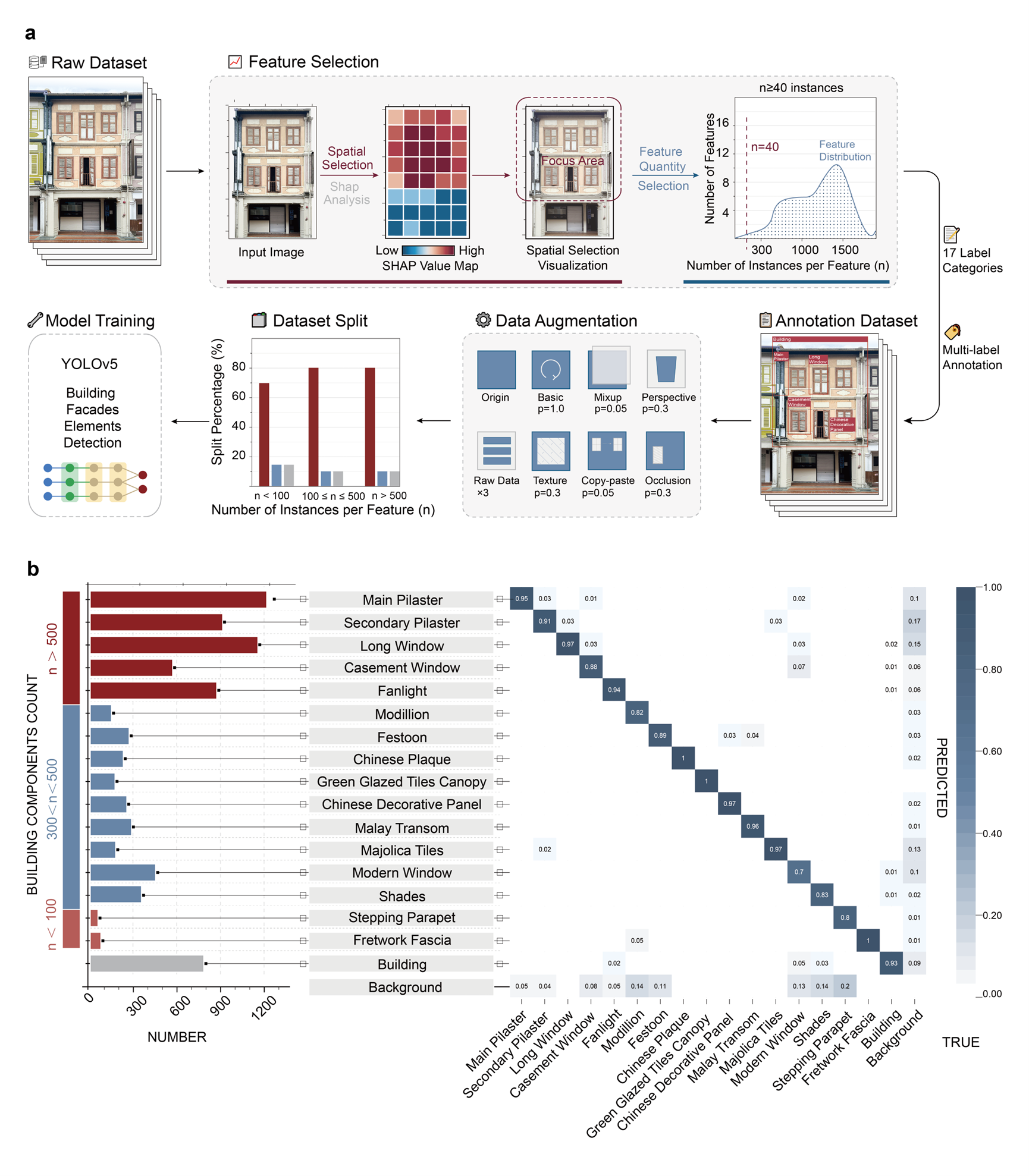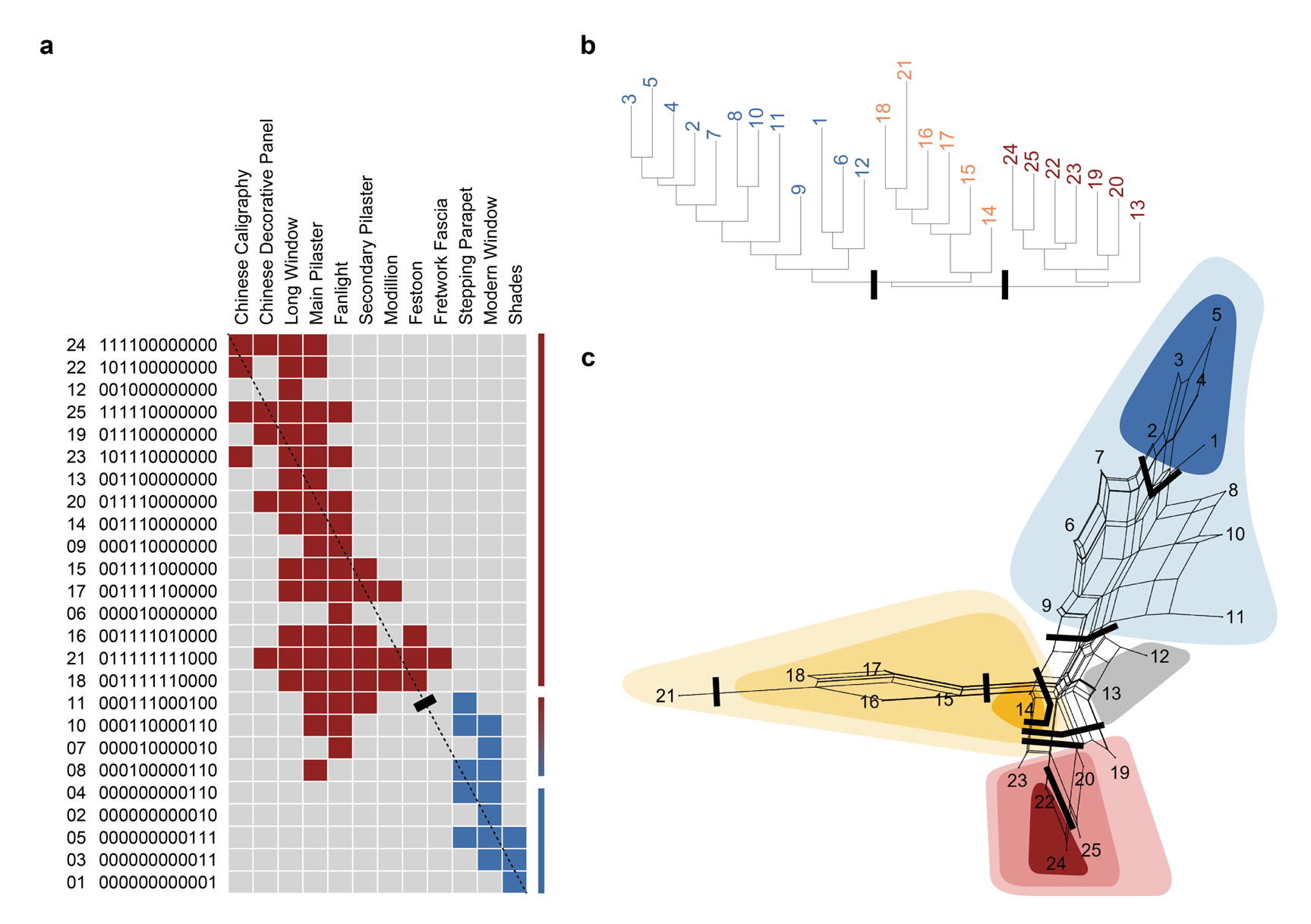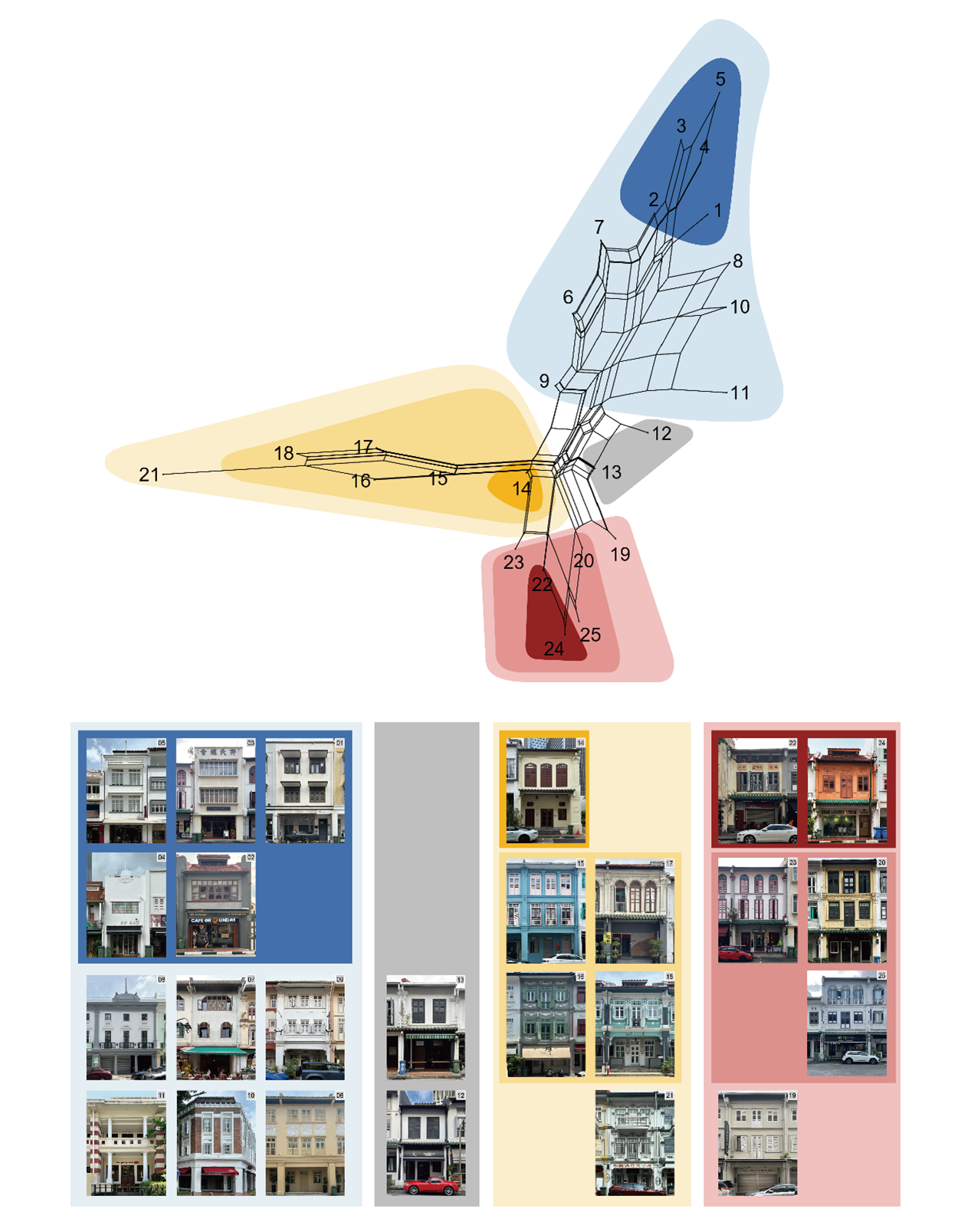Decoding Vernacular Architecture by Guiding Human Intuition with Deep Learning
(January 2024 - Apr 2025)
Principal Investigator: Prof HENG Chye Kiang
Co-PIs: LI Jiali; CHANG T C, XUE Xuan, YANG Yaotian, TIAN Zihui
Introduction
The study of vernacular architecture involves the recording, ordering, and analysis of buildings to explore their physical, social, and cultural contexts. Traditionally, this process is conducted manually and intuitively by researchers. However, such approaches are often limited by the selectivity and subjectivity of human perception, resulting in interpretations of architecture that are invariably broad and loose, often lingering on form descriptions that adhere to a preset linear historical progression or crude regional demarcations. This study proposes a systematic research framework that leverages intelligent technologies to augment researchers’ intuition in mapping or uncovering the genealogy of vernacular architecture and its connotative socio-cultural systems. The proposed vision-intelligent framework is predicated on the premise that the interpretation of historical artefacts is a process of identifying a function f from a discrete data set. This process begins with the formulation of a hypothesis, followed by three phases - collection, categorisation, and interpretation - and culminates in the verification of the hypothesis and the articulation of final explanations.
Applying this framework, we examine the stylistic classification of 1,277 historical shophouses in Singapore’s Chinatown. Our findings extend beyond the chronological classification established by the Urban Redevelopment Authority of Singapore in the 1990s, instead presenting a phylogenetic network that captures the formal evolution of shophouses across time and space. This network organises shophouse types into nine distinct clusters, revealing concurrent evidence of both cultural evolution and diffusion. Furthermore, it offers a critical perspective on the multi-ethnic character of Singapore shophouses, indicating that different ethnic groups engaged in competition and exhibited patterns of parallel evolution rather than direct convergence.
This research advances a quantitative genealogy of vernacular architecture, which not only assists in formal description but also reveals the underlying forces of development and change. It also serves as a model for collaboration between studies in vernacular architecture and computer science, demonstrating how leveraging the strengths of both fields can yield remarkable insights.





